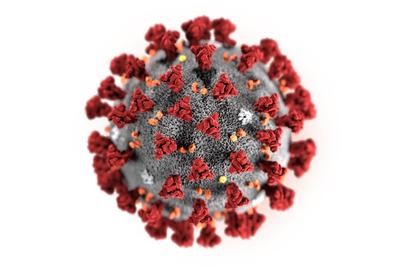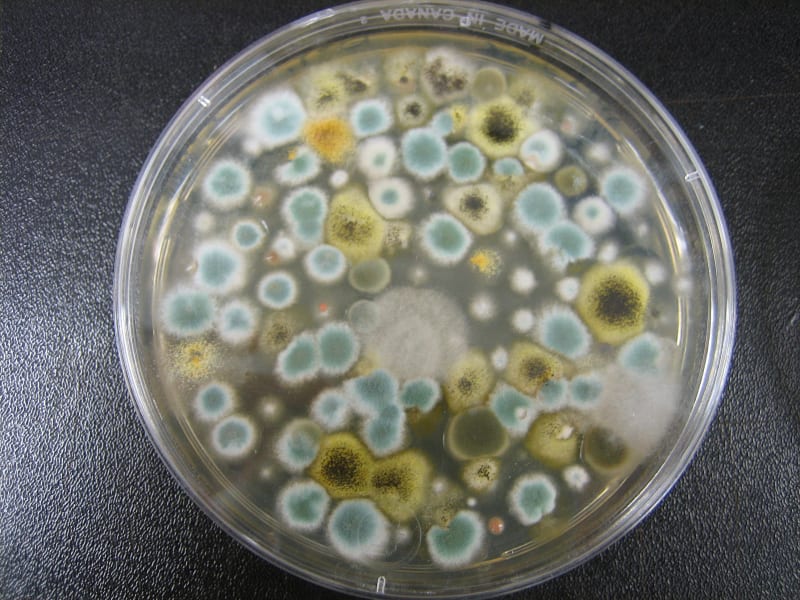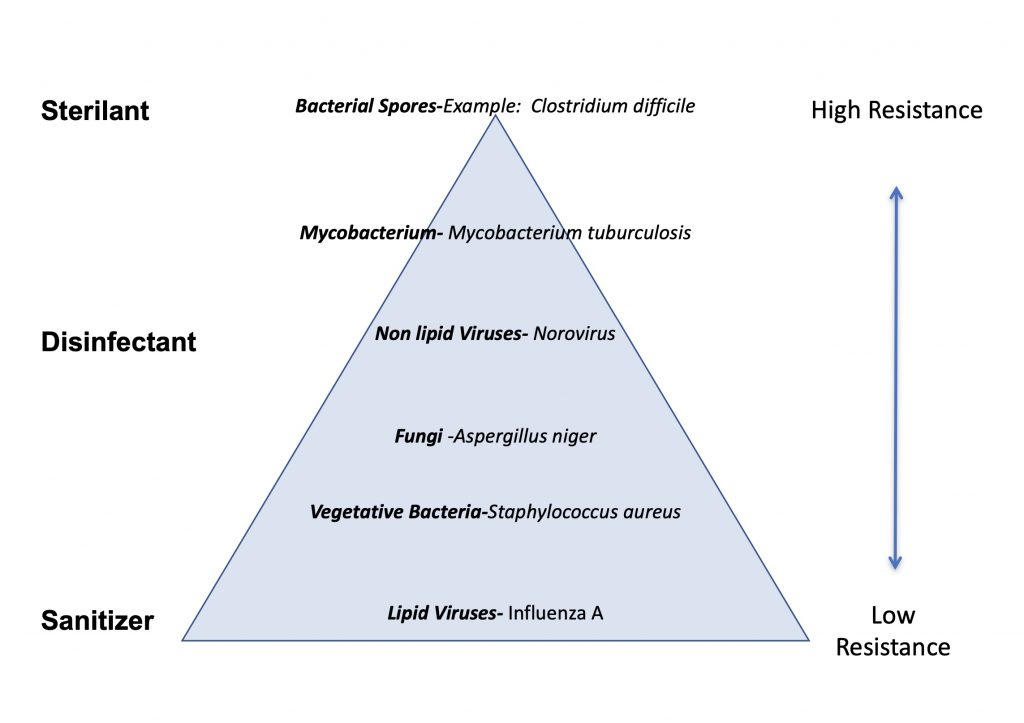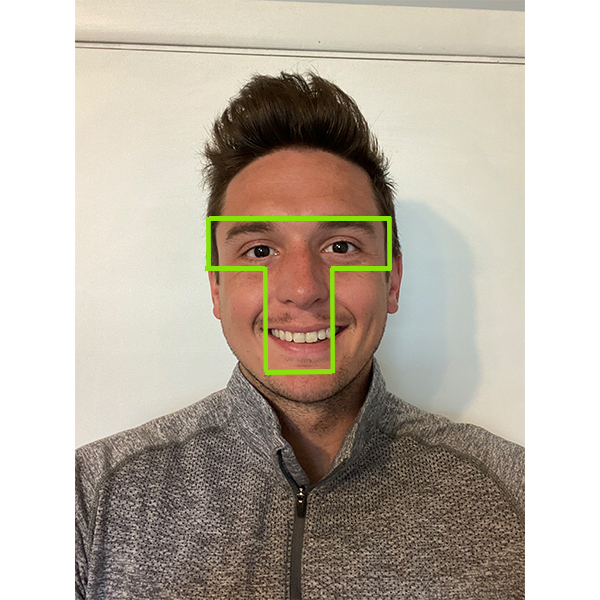School districts could never have imagined a year ago that a virus could and would become a deadly risk for students and staff. The coronavirus came with little warning and quickly overwhelmed our health care system. As infection rates soared, schools and businesses shut down, and people hunkered down at home. Supplies of personal protective equipment and disinfectants became scarce and demand for school disinfection skyrocketed.
Developing and implementing plans to reduce the risk of contracting – and spreading – the coronavirus became and continues to be a top priority. But the spread of misinformation about disinfection products has made it confusing, if not risky, to choose the most effective products. Many companies have taken advantage of consumers and organizations by peddling information and disinfection products that are ineffective and potentially harmful if not used correctly.
So what’s the solution to providing a safe environment for students and staff? It starts with consulting with a reputable company that can help you develop the most effective school disinfection plan. Reducing the risk of contracting and spreading a virus within schools and district facilities also takes a comprehensive approach: disinfection that tackles hard surfaces, air purification, hand hygiene and small devices.
Hard Surface Disinfection
Let’s start with some basics. When it comes to hard surface disinfection, you need to understand the difference between sanitizing and disinfecting.
The U.S. Environmental Protection Agency (EPA) regulates disinfectants and approves information included on product labels. According to the EPA, disinfectants destroy or inactivate 99.99% of bacteria and viruses listed on the product’s label. A sanitizer reduces 99.9% of bacteria, but not viruses, listed on the product label. Sanitizers can leave microscopic amounts of bacteria that can cause illness. Surface disinfectants must pass more rigorous EPA testing requirements and clear a higher bar than surface sanitizing products.
The bottom line? When you want to kill viruses and bacteria on hard surfaces, disinfect – not sanitize.
Read Labels and Follow Directions
Your efforts go to waste if you don’t use the right product correctly. Product labels provide the details you need, such as the bacteria and viruses it will kill. (Different products aim at different viruses and bacteria.) It also tells you how long the disinfectant must remain on the surface before you wipe it off, known as wet or contact time. When a product sits on the surface, it’s hard at work doing what it’s supposed to.
According to infection control experts, a product that has to stay wet for more than two minutes is ineffective. Maintaining more than two minutes of wet time isn’t achievable.
Apply Full Coverage
When applying a disinfectant, it’s essential to cover all high touchpoints completely. An air-assisted electrostatic sprayer gives you the best results. It delivers the disinfectant in a tiny mist and has an electrostatic charge that attracts the disinfectant to cover the surface and in nooks and crannies. The disinfectant can dry on its own with no wiping needed.
Studies have shown using a “spray and wipe” process is less than 50% effective in disinfecting hard surfaces, and typically unsafe for electronics. Electrostatic sprayers with the right disinfectant save time and money while significantly reducing the risk of infection.
Air Purification
With classrooms, locker rooms, gyms and hallways in schools, air purification is another essential piece of a comprehensive school disinfection program. Disinfecting options include equipment attached or retrofitted to the existing HVAC system, and moveable mobile units. Both systems are important and effective.
Mobile units use HEPA filtration, ultraviolet light and charcoal filters that cycle the air in a room 10 to 15 times an hour. The process reduces airborne viruses and bacteria up to 99.99%. Air purification reduces the risk of breathing in a virus or touching a surface where it’s landed and transferring it by hand to mouth, nose or eyes.
Hand Hygiene and Small Device Disinfection
Pairing hand hygiene and small device disinfection is a must to deliver a 1-2 punch to viruses and bacteria. Thorough hand washing means nothing if we’re touching devices like phones, tablets, laptop computers, badges and keys covered with germs.
A study by the University of Arizona found that cell phones carry 7-10 times more bacteria than a toilet seat. According to Business Insider, an average person touches their phone 2600 times per day. That means all those touches on a phone alone transfers viruses and bacteria to hands (even clean ones), which spreads them to everything else touched.
Having students and staff follow the Center for Disease Control (CDC) guidelines for handwashing is one of the most effective ways to stop the spread of germs. Hand sanitizers can reduce germs when soap and water aren’t available. Although the CDC recommends using hand sanitizers with at least 60% alcohol, some of the alcohol-based options can be toxic over time. One product on the market is alcohol-free and lasts up to eight hours on hands.
When it comes to effectively disinfecting small devices, ultraviolet (UV) light shines – in specific situations. UV light must directly contact on an object within three to five feet, over a precise amount of time, and at the correct dose to be effective. Distance from the light, shadows, or dust prevent UV light from reaching a device and sanitizing. Small, controlled chambers, such as a UV lightbox, which looks like a microwave, make it easy to disinfect many types of small devices, such as classroom tablets, cell phones, pens, pencils and markers. UV is becoming a staple in small device disinfection, it should be implemented in any school disinfection plan.
Unfortunately, many companies promote UV light as a top-tier, all-around disinfectant. It’s not. UV lights, unlike disinfectants, aren’t regulated, leaving some UV light manufacturers to make false and irresponsible claims that aren’t backed by scientific proof.
For example, UV light manufacturers’ studies show that UV light robots marketed to disinfect rooms and large spaces only sanitize, leaving germs that can infect and cause illness. The technology doesn’t achieve the distance, time, and dose required to disinfect the way UV light does in a small, controlled space like a UV lightbox.
There is Much to Learn
There is so much to learn about preventing infections in every environment. That’s why it’s important to work with a reputable company and people who can sort out the correct information and products to help you put together a cost-effective, comprehensive plan that’s right for your school district.
Watch for future articles to learn more about school disinfection solutions to keep your school district healthy.
About the Author
Ron Romano is president of Safety Net, a West Chester, Ohio, company helping keep people healthy and safe. Ron and his team partner with schools, businesses, hospitals and local governments from around the world, providing disinfection products and expertise. Learn more at safetynetamerica.com.






